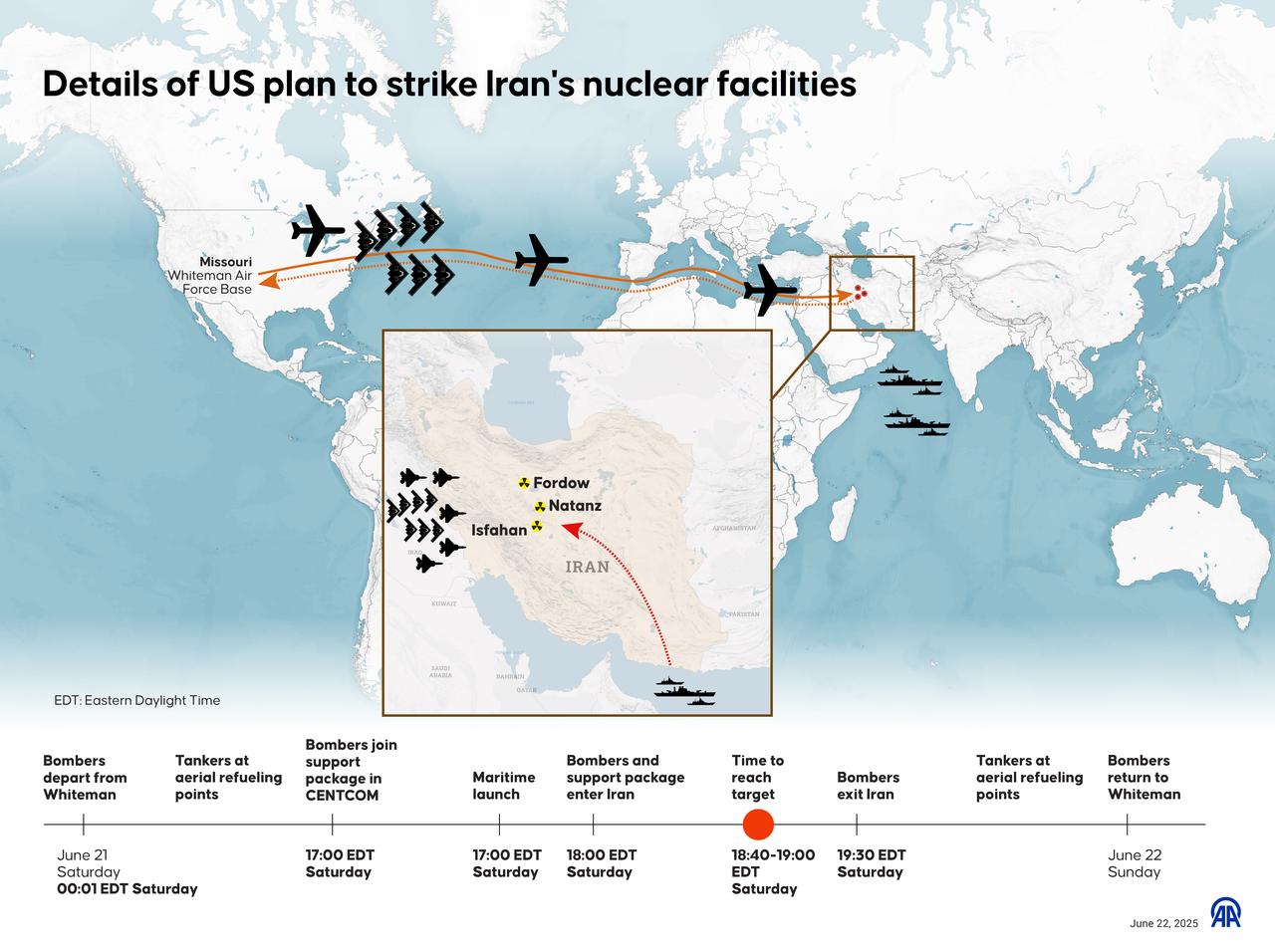
Intercepted communications between senior Iranian officials suggest recent U.S. military strikes on Iran’s nuclear program caused less damage than publicly claimed, The Washington Post reported Sunday, citing sources familiar with classified intelligence.
Signals intelligence revealed Iranian officials questioning why the attacks ordered by U.S. President Donald Trump were not as destructive as anticipated. However, a senior U.S. intelligence official cautioned the report represents only a fragment of the overall intelligence picture.
“A single phone call is not a full assessment,” the official told the Post, noting that intelligence analysis relies on multiple corroborating sources.
U.S. President Trump and Defense Secretary Pete Hegseth have repeatedly insisted the strikes “completely obliterated” Iran’s nuclear enrichment facilities in Natanz, Fordo, and Isfahan.

Iran’s Foreign Ministry acknowledged significant damage but claimed key materials had been relocated before the strikes, mitigating long-term effects. Trump dismissed those claims, stating: “They did not move anything. They did not think it was going to be actually doable what we did.”
Preliminary U.S. intelligence assessments, cited by CNN and The New York Times, suggested Iran’s nuclear program may only have been set back by several months—a conclusion disputed by the White House. CIA Director John Ratcliffe countered that “new intelligence” indicates the attacks caused “severe damage” that could take years to repair.

The U.S. strikes came amid a 12-day conflict that began June 13, when Israel launched airstrikes on Iranian military, nuclear, and civilian infrastructure. According to Iran’s Health Ministry, those strikes killed at least 606 people and injured 5,332.
Tehran retaliated with missile and drone attacks on Israeli targets, reportedly killing 29 people and injuring more than 3,400, according to figures from the Hebrew University of Jerusalem.
The fighting halted on June 24, following a U.S.-brokered cease-fire.
Meanwhile, Iran on Sunday voiced skepticism over Israel’s commitment to a fragile cease-fire that ended the most intense and destructive confrontation to date between the two archrivals, warning it is prepared to retaliate if hostilities resume.
“We did not start the war, but we have responded to the aggressor with all our power,” Iranian armed forces chief of staff Gen. Abdolrahim Mousavi told state television. “We have serious doubts over the enemy’s compliance with its commitments, including the cease-fire. We are ready to respond with force.”